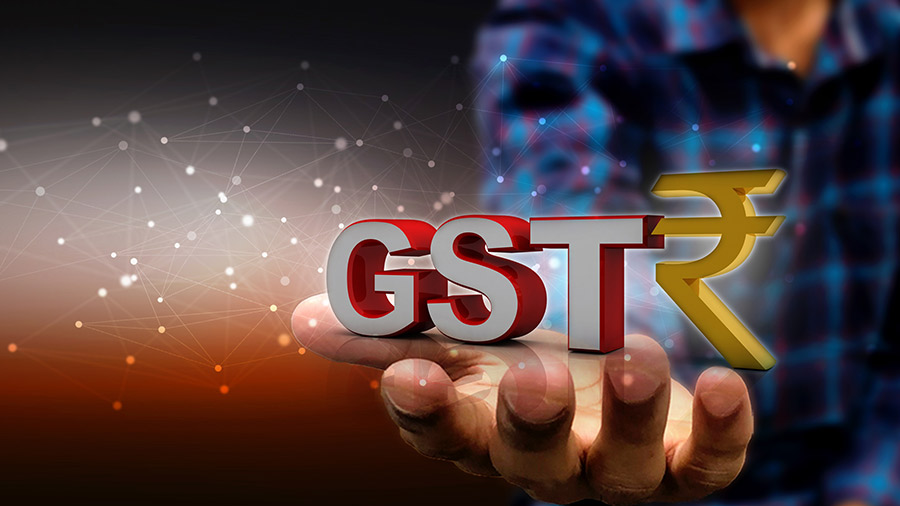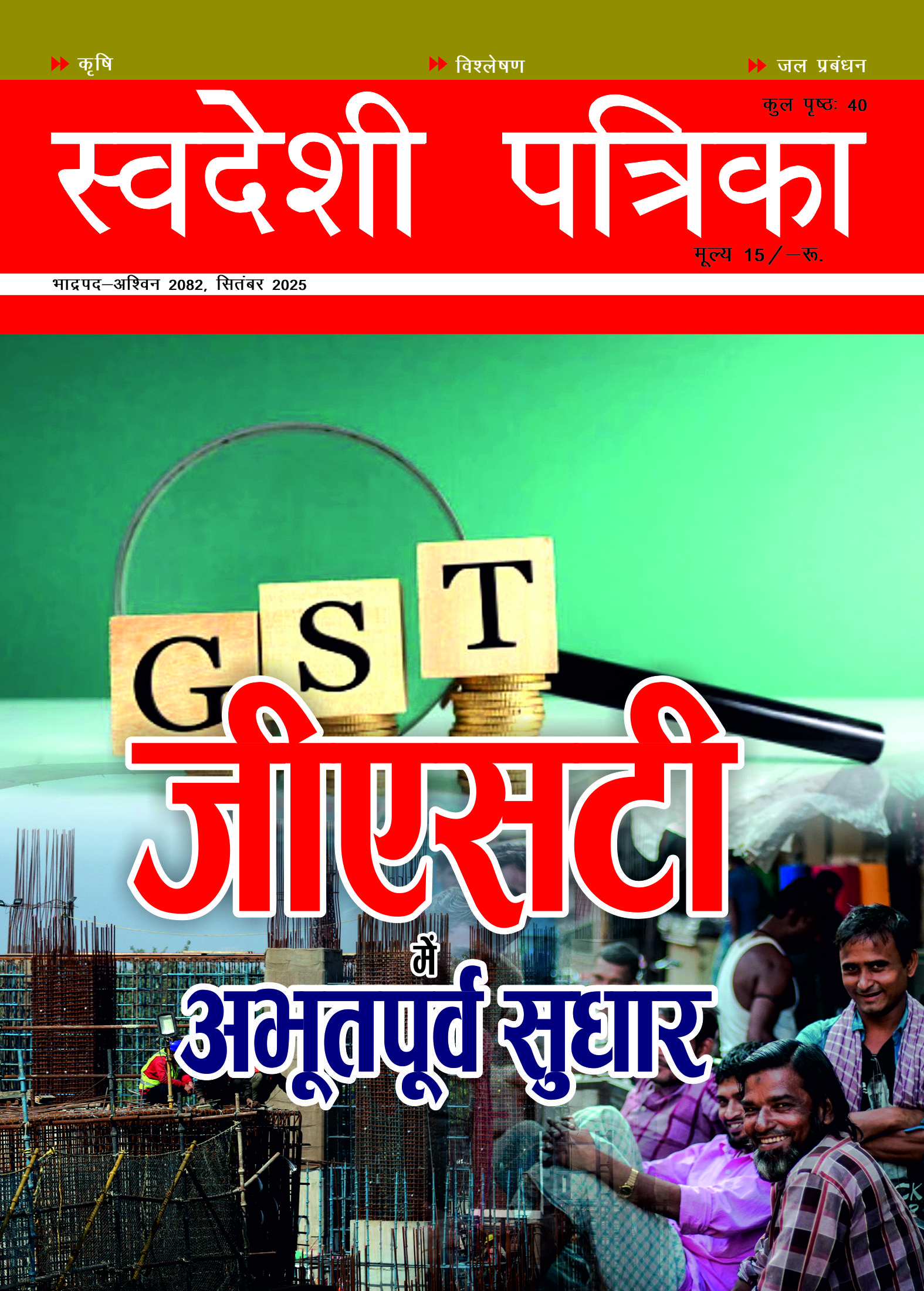
Unprecedented Reforms in GST
Economists believe that the reduction in GST rates will also increase the purchasing power of the middle class, which will boost not only consumer demand but also investment demand in the country. — Dr. Ashwani Mahajan
The GST system, launched in 2017, has seen significant ups and downs over the past eight years. The GST system was implemented in the country after nearly a decade of discussions and debate. From the very beginning, concerns, doubts, and expectations about GST have been expressed. While the main opposition party, the Congress, criticized it, calling it the "Gabbar Singh Tax," and trade organizations also initially opposed it due to implementation issues, a large number of economists and experts considered it be a major reform.
State governments and the central government were also not fully confident about this new tax system, and they insisted on the compensation for any loss in revenue, which obviously was provided to them by the centre. Although the government implemented the system in July 2017, generating sufficient revenue initially did face a major challenge.
What is GST?
GST, or "Goods and Services Tax," is a unified indirect tax system. Before GST, the central and state governments levied various indirect taxes, including sales tax, state excise duty, central excise duty, service tax, customs duty, and many others. All these taxes were unified into a single tax, GST. The rationale for this unified tax was that imposing multiple taxes make it difficult for taxpayers and collecting taxes, while also contributing to government revenue, and the cost of collection was high. Furthermore, imposing multiple taxes had unintended effects. For example, taxation at different levels resulted in the same item being taxed twice, thrice or multiple times. This resulted in lower revenue for the government, while the price of the item increased by more than the tax revenue. This unintended effect is also known as the ‘cascading effect’.
Indirect taxes are generally considered unsuitable as a source of revenue because they are levied on goods and services consumed by both the rich and the poor. Therefore, to make indirect taxes progressive, it is considered necessary to impose different taxes on different items while implementing them. For example, five GST rates of 0, 5, 12, 18, and 28 percent were implemented. Certain essential goods, including agricultural products, were taxed at zero, and different goods were taxed differently, with a 5 percent GST on essential goods. Subsequently, based on this criterion, GST rates of 5, 12, 18, and 28 percent were imposed, with a 28 percent tax on luxury and harmful goods.
Why different rates of GST?
Generally, regardless of the type of tax – indirect or direct – all taxes are levied at different rates to achieve progressiveness. For example, income tax is levied at zero up to a certain level, and then at increasing rates based on the scale of income. Similarly, in case of indirect taxes, goods and services consumed by the general public, mostly by the lower income groups, are taxed at zero or very low rate. Similarly, when GST was implemented, five rates were introduced to make it more progressive. Since then, economists have been divided on this issue. One group of economists argues that a single GST rate should be implemented to make it more efficient. This type of system exists in many countries, including Singapore, but they are all developed countries. However, in a country like India, where inequalities are so stark, a single GST rate would be inappropriate. On the one hand, a single GST rate is applied to everyday essential goods like milk, curd, cheese, packaged food items, and bicycles, while on the other, a single GST rate is not appropriate for expensive cars. For this reason, five rates, including zero, were introduced to make the GST progressive. However, a frequently expressed view is that multiple rates lead to greater confusion, especially when the rates for final goods and intermediate goods differ. Therefore, it was believed that less number of rates lead to efficiency in GST administration. However, to maintain progressiveness in GST, two minimum rates, in addition to zero, are appropriate. It appears that the decision to have two rates of 5 per cent and 18 per cent has been taken based on this principle.
Alongside, special GST rates have been imposed on luxury goods, such as highly expensive cars, and items considered harmful to health, such as carbonated beverages, cigarettes, and gutkha. Many products previously subject to a five percent GST rate have now been brought under zero GST. These include most food items, including dairy products. Additionally, many products previously subject to a 12 percent and 18 percent GST rate have now been put under 5 percent GST rate. Products previously subject to a 28 percent GST rate have now been reduced to an 18 percent rate. It can be argued that GST rates have been significantly reduced across the board. Similarly, considerable efforts have been made to rationalize GST rates.
The Vision Behind the Reduction in GST Reforms
While GST reforms are a popular move, it is important to understand the objectives behind the reduction and rationalization of GST rates.
First, the reduction in GST rates comes at a time when US President Donald Trump has imposed a 50 percent import duty on most Indian products. The Prime Minister's speech from the ramparts of the Red Fort on August 15th and his insistence on Swadeshi (indigenous products) can also be seen as a link to this. The reduction in GST rates will make domestically produced products cheaper, which will not only increase the consumption of indigenous products but also make our products more competitive.
Second, the reduction in GST rates will make common consumer goods cheaper, reducing inflation. Reducing inflation has a positive impact on economic growth. Low rate of inflation pushes interest rates downward, which helps investment. This helps boost to the housing sector and consumption of durable goods.
Third, the reduction in GST rates aims to provide relief and encouragement to the renewable energy sector. The GST on solar and wind energy equipment has been reduced from 12 percent to 5 percent. It is expected that not only will the establishment of renewable energy plants be encouraged, but the cost of renewable energy will also come down significantly, leading India to greater self-reliance in this sector.
Fourth, the reduction in GST on agricultural equipment and inputs will reduce the cost of agriculture. This reduction in costs will not only improve the condition of farmers but will also make our agricultural production more competitive globally.
Fifth, economists believe that the reduction in GST rates will also increase the purchasing power of the middle class, which will boost not only consumer demand but also investment demand in the country.


